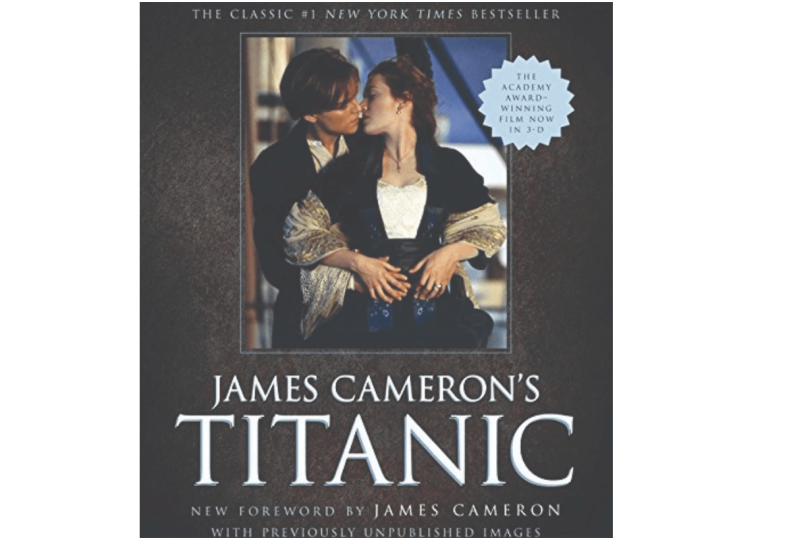With James Cameron’s Avatar: The Way of Water all set for a worldwide release next week, let’s go back to the film that made him believe big, for the first time. No, we aren’t talking about Terminator 2: Judgment Day or True Lies but the film that came, that screened and took most of the awards that year – Titanic. Released in December 1997, it not only raised the bar for other films to follow but also gave the director the confidence he needed to take on bigger tasks.
With the help of screenwriter Ed Marsh, James Cameron released a book about the making of Titanic ten years back, and there was no better time to revisit that effort than days before the film completed its 25 years later this month. What makes this bestselling book different from other books about the film is that it collaborates with the cast, the crew, and above all the director who not only pens a new introduction but a heartfelt one as well.
The book’s 3D lenticular cover is a tribute to its 3D version released a decade back, but that’s not the only good thing about it. If read properly, it can give the readers twice the amount of happiness than just one book. The narration about the making of Titanic takes most of the pages but so do the never-before-seen photographs that have another story to tell.
Unlike other movie tie-in books, this one wants you to watch the movie again instead of giving you just a synopsis. After all, the newer edition has 18 pages of new material from the previous edition, with some of them being from James Cameron’s personal archive. Add to that the many behind-the-scenes stories and anecdotes from Cameron and his cast and you have a perfect tribute to a film that is still unmatched after two and a half decades.
James Cameron explains why making Titanic was a titanic task while talking to the author, and discusses the lengths to which his crew went to make it look as authentic as possible. From the wardrobe used in the film to the crockery, the accents, the mannerisms, and even the hairstyles, everything had to be perfect before the film went to the floors, and perfect, it all was. He explains that without the support of his art department, he might not have been able to resurrect Titanic, whereas the eyewitness accounts and some never-before-revealed information helped him greatly in creating a blockbuster for generations.
How many films have been made on a Titanic scale in the last fifty years? How many books feature the director revealing the secrets behind the making of the original film? How many flicks have sustained 25 years at the box office in this ever-evolving world? Only the name Titanic comes to mind because James Cameron doesn’t like to make films for one generation, but for multiple ones and that’s why nearly all his films are evergreen.
Aside from its huge size, this book takes you back in time to the moment when James Cameron realized that if he could make a film on the greatest tragedy of the last century, he could pull off anything. The readers get to know that during the making of his film The Abyss in the late 1980s, the director got the ‘Titanic’ idea during one of his trips underwater. After weighing the pros with the cons, he went ahead with the idea and inspected the original ship’s wreck on multiple underwater trips, before making the decision to go ahead with the film.
The author also reveals that most of the crew members from the team that took Cameron underwater were retained as actors in the film, whereas he explains the reason why it was necessary to show Kate Winslet and Leonardo DiCaprio’s characters as rich and poor, respectively. Furthermore, the readers get to know from this book that the ship where the action, romance, and thrill took place was not an actual ship but one recreated in the studios, by the best technical crew ever assembled.
It wouldn’t be incorrect to say that this book is like a James Cameron film – it can be categorized into three acts. The first act features the pre-production discussion about the film, the second one deals with the shoot and the final act is all about the film’s post-production. Don’t be surprised to find out that Bill Paxton’s character never went underwater, because he promised his wife, he wouldn’t do anything dangerous; Leonardo DiCaprio was in two minds before saying yes to the film while Kate Winslet claims that the film’s impact on her personal and professional development made her a better person and an actor.
The book just doesn’t revolve around the stars but also the supporting characters namely the antagonist played by Billy Zane, Rose’s mother who wanted her daughter to get married for her own selfish needs, as well as the ship’s builder played by Victor Garber, who was onboard the ship’s fateful journey. But the best part about the film is the story behind the selection of yesteryear Hollywood star Gloria Stuart as the present-day Rose, who not only narrated the story but also proved to be the missing connection between the two eras.
On the whole, if you are a fan of the film, then you must have this book because it will make you fall in love with it again. From the actual construction of the ‘ship of dreams’ to the sinking of the unsinkable, from the casting of most of the actors to the ingenious way of filming the disastrous climax, Titanic did everything right. A removable double-sided poster not only just reminds you of the time when the film came out, but also of the efforts of the entire crew that brought back the ship that couldn’t complete its maiden voyage, and took the audience on a journey they would never forget.







